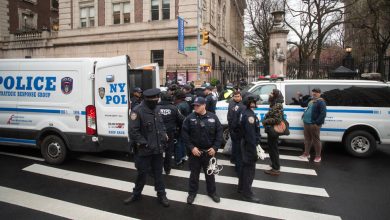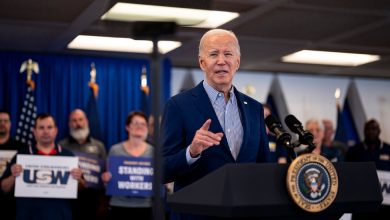M.L.B. Moves in Players’ Direction, but Delays Seem Inevitable

For roughly an hour on Saturday, the lead negotiators and lawyers from Major League Baseball and the players’ union met at the league’s office in Manhattan. A few owners and players joined virtually. It was the fifth time since M.L.B. locked the players out on Dec. 2 that the sides had met about the major economic hurdles to a new labor deal.
Even though M.L.B. made a proposal that moved in the union’s direction on a number of matters, the initial reaction from the players was a feeling that several of their concerns remained insufficiently addressed. And thus, while neither side will say it publicly, it is clear that a last-minute deal hasn’t come together and spring training will not start as scheduled on Wednesday.
The question remains whether the regular season will indeed commence on March 31, and if a late start would shorten the season.
M.L.B.’s latest proposal was its first since Feb. 1. After the players offered their own proposal, M.L.B. requested intervention from an outside federal mediator — whose help would be nonbinding and voluntary — because the league was frustrated with the pace of progress. The union rejected that move because it believed the league should return to the negotiating table and make a counter offer.
So on Saturday, days after M.L.B. officials and the owners of all 30 clubs huddled in Florida for their quarterly meetings, the league made the proposal that M.L.B. Commissioner Rob Manfred had said would be “good-faith positive.”
Among the areas in which M.L.B. improved its offer to players: it offered to further raise the minimum salaries, to increase the size of the bonus pool for top players not yet eligible for salary arbitration (from $10 million to $15 million), and to tweak its stance on the luxury tax system (raising its proposed thresholds by $2 million in each of the final three years, ending with $222 million, and removing the third-round draft pick penalty for going over the first tier). The first threshold was at $210 million in 2021, and the league has suggested $214 million for 2022, while the union has asked for $245 million.
Among the areas in which M.L.B. remained steadfast: the revenue sharing system among clubs and the number of players eligible for salary arbitration — both of which the union has sought to change or expand. And despite M.L.B.’s alterations to it on Saturday, the union has repeatedly had concerns with the league still proposing to double the luxury tax rates (up to 100 percent at the highest end) and the loss of a second- or first-round pick for going over the second and third thresholds, respectively.
Overall, the union has been seeking a series of improvements to the economic structure of the sport, with a goal of helping younger players, improving competition among teams, curbing service time manipulation and injecting more spending. The league, though, believes that players have a fair system without a hard salary cap and sees it as a matter of wealth distribution — that star players are disproportionately commanding more than others.
On Saturday, M.L.B. also presented the union with a 130-page memorandum of understanding that included the basic structure of a new labor deal and the matters they had agreed upon. (The sides have found some common ground in, for example, expanding the playoffs and a universal designated hitter.)
Earlier in the week, Manfred declined to announce a delay to spring training until the baseball schedule was discussed with the union at Saturday’s meeting. The sides did so in Manhattan, with M.L.B. presenting the union with its view on when a deal would need to be completed.
While the specifics were immediately unclear, Manfred had provided clues. He said earlier in the week that a minimum spring training length of four weeks made sense in order to avoid the spike in injuries experienced before the coronavirus pandemic-shortened 2020 regular season. Reading between the lines: a new deal would be needed by the first week of March to begin the regular season as planned.
The biggest economic casualty of a delayed spring training — pitchers and catchers were scheduled to begin arriving Wednesday for what was supposed to be six weeks of camp — could be the annual exhibition games. Those are slated to begin on Feb. 26.




